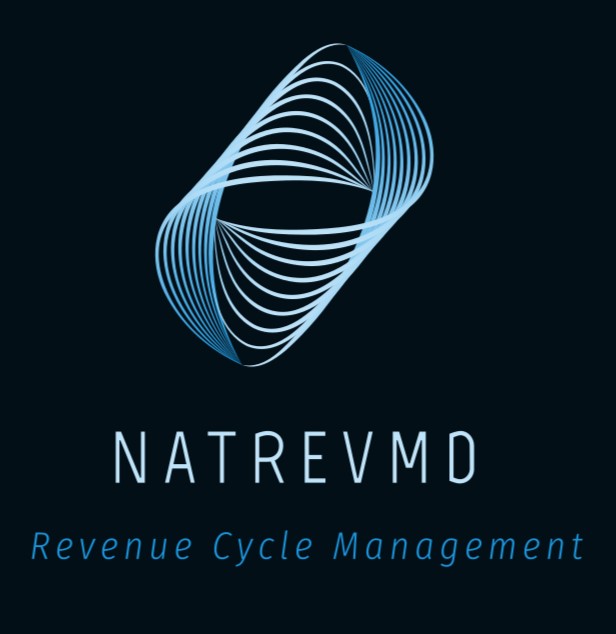By NatRevMD | Published June 2025
Large, multi-provider medical practices are under more financial pressure than ever. Reimbursements are down, denials are up, and the cost of managing internal billing teams keeps rising. Even high-volume practices generating $10 million or more annually are seeing shrinking margins.
At NatRevMD, we specialize in solving this problem. Our clients routinely increase collections by 15–25% and reduce their billing costs through proven revenue cycle strategies.
Here’s how leading practices are optimizing their revenue cycle and reclaiming revenue they didn’t know they were losing.
1. Uncover the Real Cost of Internal Billing
If you think your billing costs are around 4–6% of collections, you’re probably underestimating. When you add up salaries, benefits, turnover, software, training, compliance, management time, and infrastructure, the true cost is usually closer to 8–15%.
Let’s break that down:
- Direct labor: One biller earning $55K can cost $70K+ with benefits and taxes.
- Turnover: Replacing just one biller can cost $25K–$40K in recruitment, training, and lost productivity.
- Software: PM systems, EHRs, and clearinghouses easily cost six figures a year.
- Management time: Your leadership team is spending time solving billing issues instead of growing the business.
For a $10M practice, inefficient billing could mean $800K–$1.5M in hidden costs annually.
Quick Tip: Use a full cost worksheet (like NatRevMD’s free ROI calculator) to uncover your actual billing overhead.
2. Focus on Denial Prevention (Not Just Appeals)
Claim denials have skyrocketed—up over 40% since 2020. For a $10M practice with a 15% denial rate, that’s $1.5M in delayed or potentially lost revenue every year.
If you’re only reacting to denials, you’re already behind.
Proven Denial Prevention Tactics:
- Eligibility and benefits verification before every appointment
- Automated pre-authorization tracking
- Clean claim edits via clearinghouse integration
- Regular coding audits and training
Our clients typically reduce denials by 30–50%, adding hundreds of thousands back to their bottom line—without increasing patient volume.
3. Prioritize Compliance Before It Costs You
With CMS and private payers ramping up audits, compliance mistakes aren’t just risky—they’re expensive. Documentation gaps, incorrect modifiers, or outdated coding practices can cost a practice tens or hundreds of thousands in penalties.
Most practices aren’t doing enough. Internal audits are rare, compliance policies are outdated, and there’s no dedicated oversight.
Our Recommendation:
- Implement routine chart reviews
- Train billing teams on specialty-specific compliance risks
- Invest in documentation tools and workflows
- Get support from a billing partner that offers built-in compliance reviews
4. Outsourcing Can Cut Costs and Boost Revenue—Yes, Even for Large Practices
We’ve heard it before: “We’re too big to outsource.” But the truth is, larger practices have even more to gain by transitioning billing to a performance-driven RCM partner.
At NatRevMD, large practices generating $10M annually often increase collections by $1.5M–$2.5M within 12–18 months, while also eliminating internal costs and staffing headaches.
What You Get When You Outsource:
✅ Lower cost to collect
✅ Fewer denials
✅ Faster payments and stronger cash flow
✅ Audit support and regulatory compliance
✅ Scalable support as your practice grows
We take over denial prevention, compliance monitoring, claims submission, patient statements, and monthly reporting—so your internal team can focus on patient care and growth.
5. Track the KPIs That Actually Matter
If your team isn’t monitoring key billing metrics, you’re flying blind. Many practices track collections but miss the drivers behind revenue loss.
Here are the KPIs we review monthly with our large clients:
Revenue KPIs:
- Net collection rate (target: 95–98%)
- Denial rate (goal: <10%)
- Insurance AR > 90 days (goal: <15-20%)
- Cost to collect (goal: 4–8%)
Operational KPIs:
- First-pass resolution rate
- Claim submission lag
- Patient collection rates
- Appeal success rate
- Coding accuracy
When NatRevMD begins working with a practice, we typically find 3–5 of these metrics are underperforming—and we create an action plan to fix them.
Bottom Line: $10M Practices Can’t Afford Billing Inefficiencies
At this level of revenue, every percentage point matters. Losing 5% of collections means $500,000 a year left on the table—money that could be used for provider bonuses, expansion, or tech upgrades.
If your internal billing team is overworked, undertrained, or inconsistent, now is the time to rethink your strategy.
📊 Let’s Find Out What You’re Leaving on the Table
Want to know exactly how much revenue your practice could recover? NatRevMD offers a complimentary Revenue Cycle Assessment for large practices.
We’ll benchmark your KPIs, uncover hidden costs, and show you how to increase collections while cutting your cost to collect.





